24 Birds of Prey in North Carolina
North Carolina, with its diverse habitats ranging from mountains to coastal areas, is home to various birds of prey. Here are 24 species that can be found in the state:
1. Red-tailed Hawk (Buteo jamaicensis)
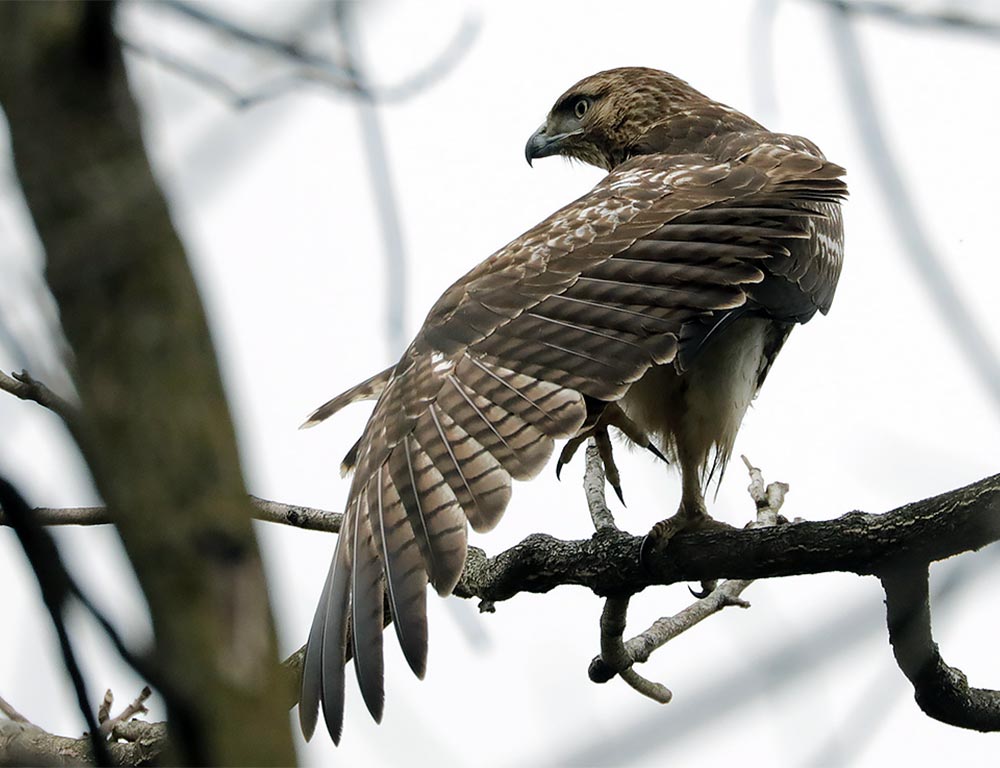
The Red-tailed Hawk, scientifically known as Buteo jamaicensis, is a bird of prey that is widespread in North America. It’s easily recognizable by its distinctive red tail, which is more pronounced in adults.
These hawks are adaptable and thrive in varied environments, including deserts, woodlands, and urban areas. They primarily feed on small mammals, birds, and reptiles.
Red-tailed Hawks are known for their soaring flight and keen eyesight, which allows them to spot prey from great heights.
They play a crucial role in the ecosystem as apex predators, helping control rodent populations. These hawks are monogamous and known for their loud, piercing calls. They are often seen perched on high vantage points like trees or poles.
| Kingdom | Animalia |
| Phylum | Chordata |
| Clade | Dinosauria |
| Class | Aves |
| Order | Accipitriformes |
| Family | Accipitridae |
| Genus | Buteo |
| Species | B. jamaicensis |
2. Red-shouldered Hawk (Buteo lineatus)
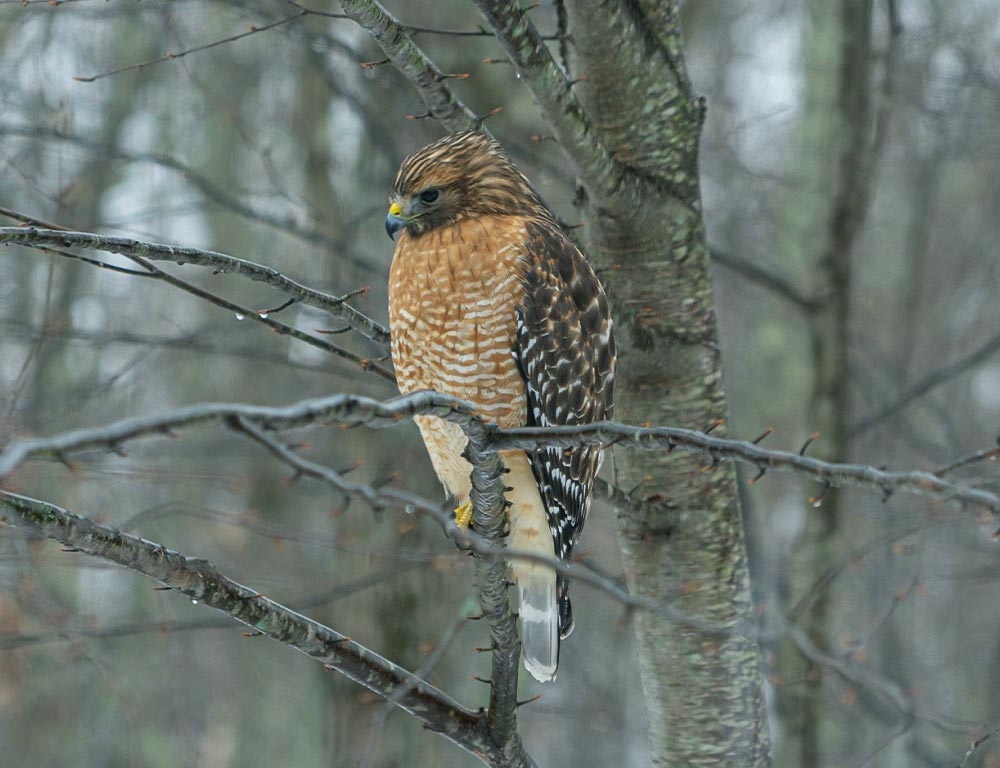
The Red-shouldered Hawk, or Buteo lineatus, is a medium-sized hawk found in wooded areas of eastern North America. Its striking features include reddish-brown shoulders and a boldly barred tail and chest.
They prefer forested habitats near water bodies and are often heard before seen, thanks to their distinctive, loud calls. Their diet mainly consists of small mammals, amphibians, and reptiles.
Red-shouldered Hawks are known for their acrobatic flight, often seen gliding through forests with agility. They are territorial birds, especially during the breeding season, and often return to the same nesting area yearly.
These hawks build large stick nests in tall trees. Their presence is an indicator of healthy, mixed hardwood forests.
| Kingdom | Animalia |
| Phylum | Chordata |
| Class | Aves |
| Order | Accipitriformes |
| Family | Accipitridae |
| Genus | Buteo |
| Species | B. lineatus |
3. Cooper’s Hawk (Accipiter cooperii)
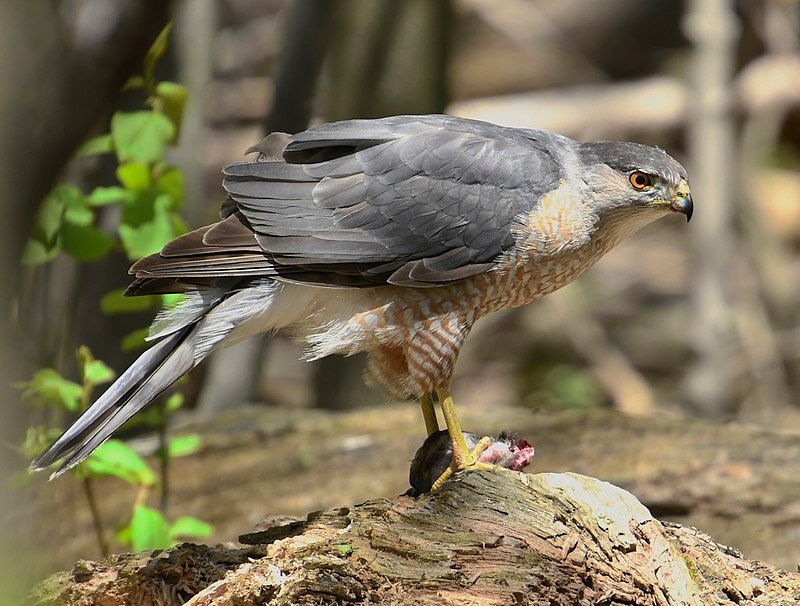
Cooper’s Hawk, scientifically named Accipiter cooperii, is a medium-sized hawk commonly found in North America. It’s part of the Accipiter genus, known for hawks that are adept at navigating through dense woodland.
Cooper’s Hawks have short, rounded wings and a long tail, which aid in maneuvering through trees during high-speed chases. They primarily prey on birds and small mammals, often catching them in mid-air.
These hawks are blue-gray on the back with reddish bars on their underparts and a dark cap on their head. They are known for their stealth and surprise hunting tactics. Cooper’s Hawks are solitary and are more often heard than seen, with a distinct, sharp call.
They adapt well to urban environments, where they are often spotted hunting near bird feeders.
| Kingdom | Animalia |
| Phylum | Chordata |
| Class | Aves |
| Order | Accipitriformes |
| Family | Accipitridae |
| Genus | Accipiter |
| Species | A. cooperii |
4. Sharp-shinned Hawk (Accipiter striatus)
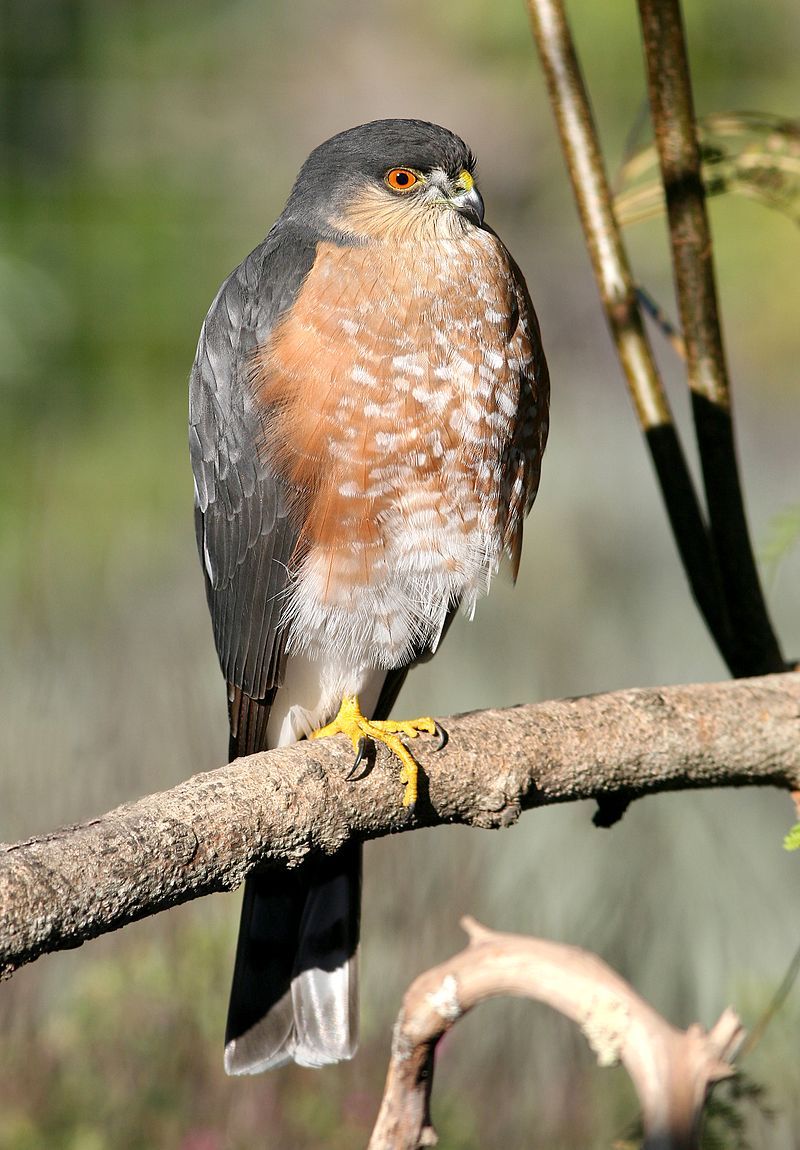
The Sharp-shinned Hawk, scientifically known as Accipiter striatus, is the smallest hawk in North America. It is a member of the Accipiter genus, characterized by short, rounded wings and a long tail, which enable agile flight through dense forests.
Sharp-shinned Hawks are known for their stealthy hunting style, primarily preying on small birds and occasionally small mammals and insects.
They have slate-gray upperparts, finely barred reddish underparts, and a distinctive square-tipped tail. These hawks are migratory, moving to Central and South America during the winter.
They are often seen darting through wooded areas or near bird feeders. Sharp-shinned Hawks are solitary and elusive, making them a challenging but rewarding sighting for birdwatchers.
| Kingdom | Animalia |
| Phylum | Chordata |
| Class | Aves |
| Order | Accipitriformes |
| Family | Accipitridae |
| Genus | Accipiter |
| Species | A. striatus |
5. Osprey (Pandion haliaetus)
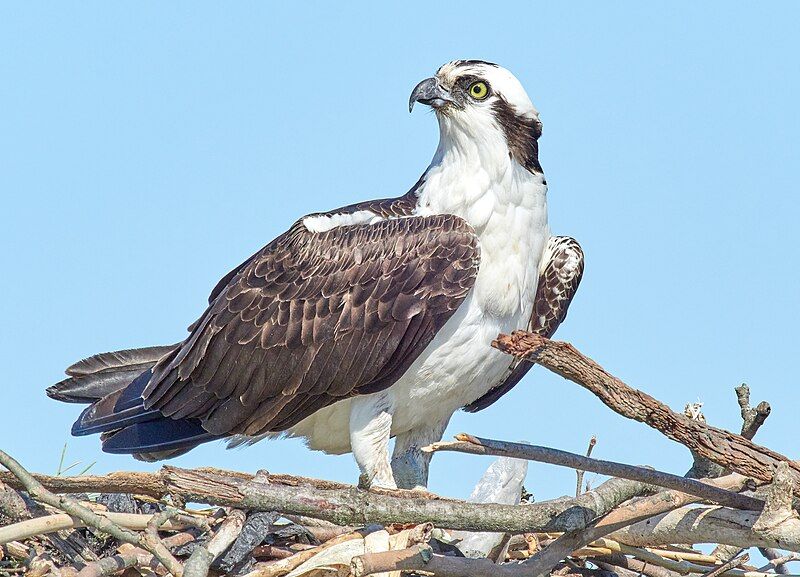
The Osprey, or Pandion haliaetus, is a unique raptor specialized for fish hunting. Found near coastlines, rivers, and lakes worldwide, it is the only member of the family Pandionidae.
Ospreys have a distinctive appearance with white underparts, dark brown upperparts, and a characteristic black eye stripe.
They are known for their dramatic hunting technique, diving feet-first to catch fish just below the water’s surface.
Ospreys have reversible outer toes and barbed pads on their feet, adaptations that help grasp slippery fish. They build large stick nests, often on man-made structures near water.
Ospreys are indicators of healthy aquatic ecosystems. Their migratory patterns can cover vast distances, showcasing remarkable endurance.
| Kingdom | Animalia |
| Phylum | Chordata |
| Class | Aves |
| Order | Accipitriformes |
| Family | Pandionidae |
| Genus | Pandion |
| Species | P. haliaetus |
6. Broad-winged Hawk (Buteo platypterus)
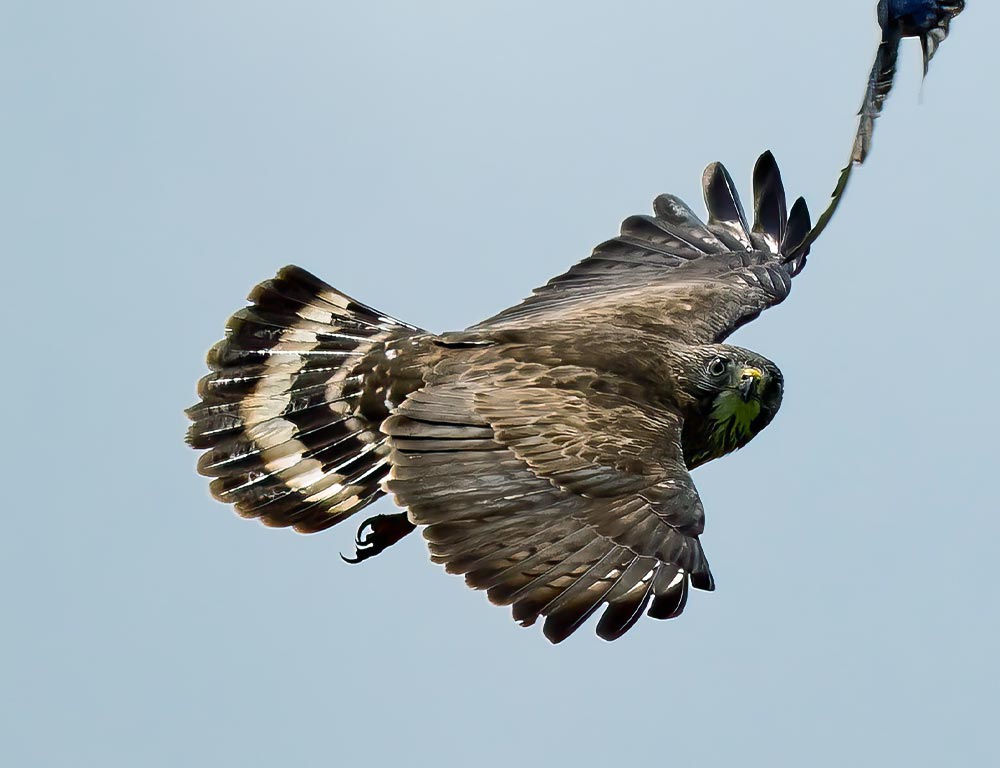
The Broad-winged Hawk, Buteo platypterus, is a small to medium-sized raptor known for its striking migratory behavior. It inhabits wooded areas in North America during the breeding season and migrates to South America for winter.
Broad-winged Hawks have compact bodies with broad wings, as their name suggests. They display a reddish-brown head, barred underparts, and a distinct white band on the tail. They mainly feed on small animals, including rodents, frogs, and insects.
These hawks are famous for their long-distance migration, forming large groups called “kettles,” which can number in the thousands. Their soaring flight during migration is a spectacular sight and a highlight for bird enthusiasts.
| Kingdom | Animalia |
| Phylum | Chordata |
| Class | Aves |
| Order | Accipitriformes |
| Family | Accipitridae |
| Genus | Buteo |
| Species | B. platypterus |
7. Great Horned Owl (Bubo virginianus)
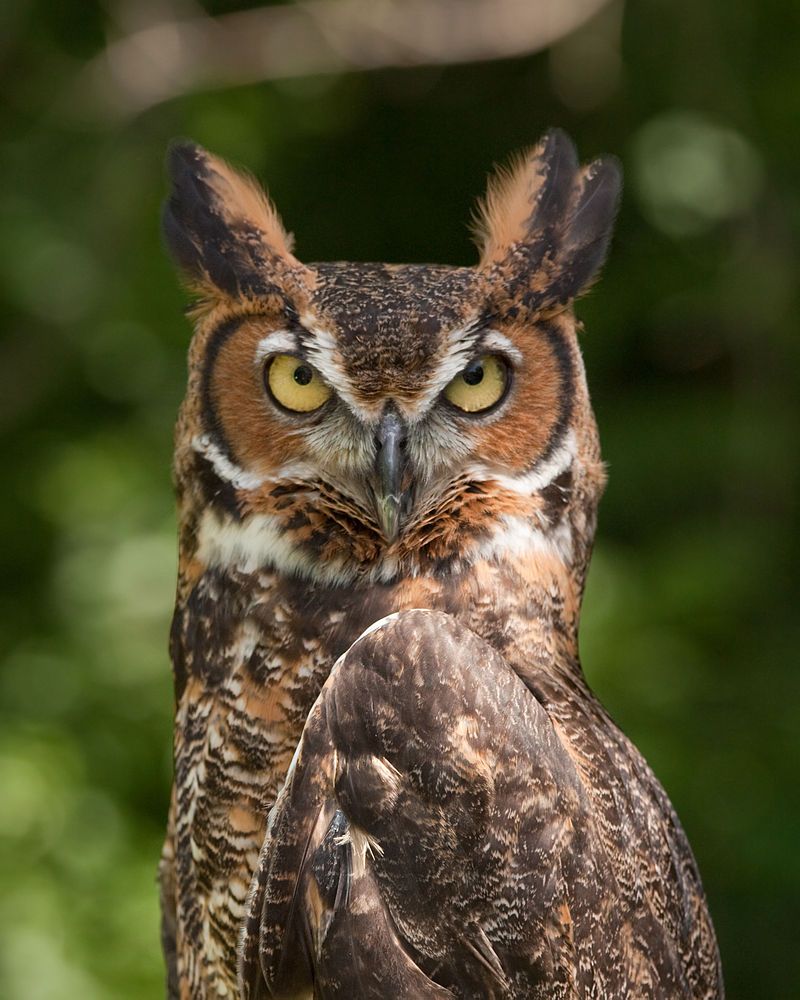
| Kingdom | Animalia |
| Phylum | Chordata |
| Class | Aves |
| Order | Strigiformes |
| Family | Strigidae |
| Genus | Bubo |
| Species | B. virginianus |
8. American Kestrel (Falco sparverius)
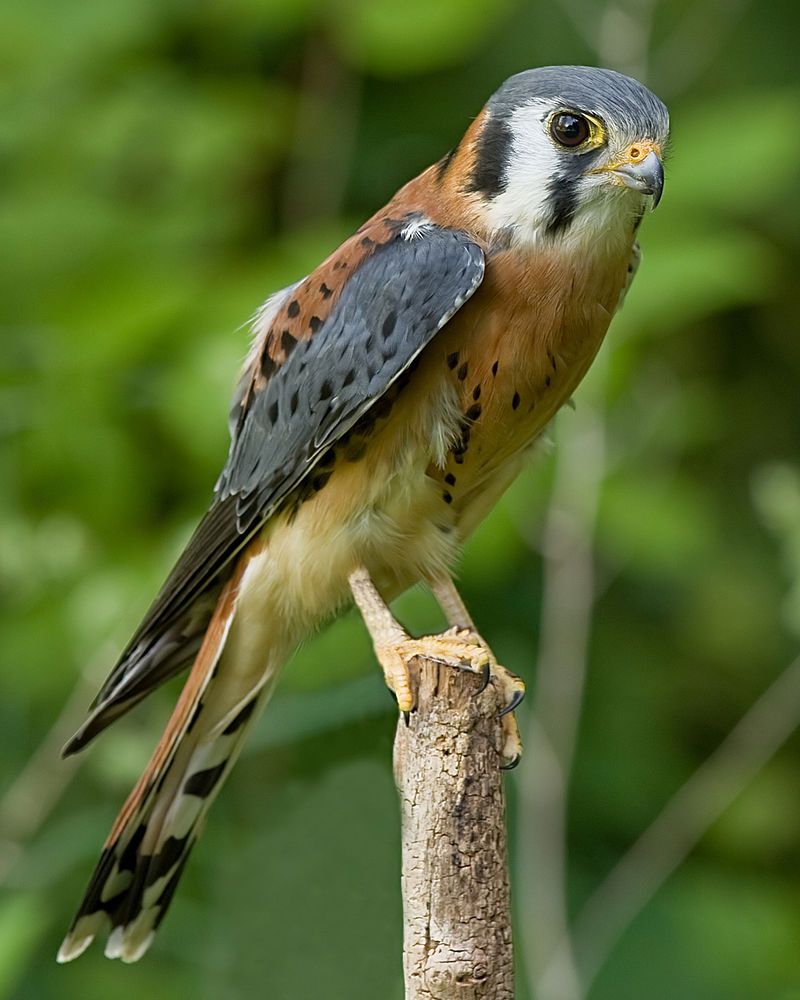
The American Kestrel, scientifically named Falco sparverius, is North America’s smallest and most colorful falcon.
Often seen perched on wires or hovering over open fields, they are easily recognized by their slate-blue wings and rusty back and tail in males and brown-streaked plumage in females.
These birds are adept hunters, feeding on insects, small mammals, and birds, capturing prey with precise dives. American Kestrels are known for their distinct flying abilities, showcasing remarkable agility in the air.
They often nest in tree cavities or nest boxes and can adapt to various habitats, including urban areas. Their presence is a delight to birdwatchers and a vital part of the ecosystem, controlling insect and rodent populations.
| Kingdom | Animalia |
| Phylum | Chordata |
| Class | Aves |
| Order | Falconiformes |
| Family | Falconidae |
| Genus | Falco |
| Species | F. sparverius |
9. Peregrine Falcon (Falco peregrinus)
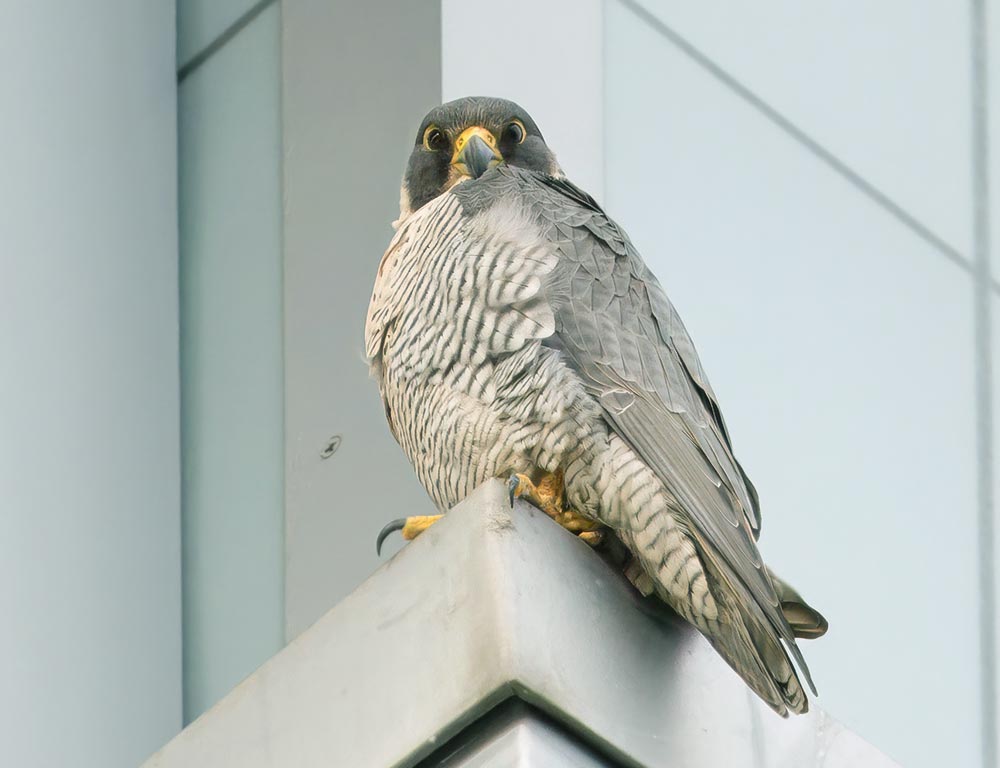
The Peregrine Falcon, Falco peregrinus, is renowned for being the fastest animal on the planet, reaching speeds over 200 mph during its characteristic hunting stoop.
This medium-sized falcon has a blue-gray back, barred underparts, and a distinctive black “mustache” contrasting with its white face.
Peregrine Falcons are found worldwide, inhabiting various environments, from urban skyscrapers to coastal cliffs.
They primarily feed on birds, catching them in mid-air. Conservation efforts have successfully brought this species back from the brink of extinction in many areas, making it a conservation success story.
They are admired for their speed, agility, and hunting prowess, making them a favorite among bird enthusiasts.
| Kingdom | Animalia |
| Phylum | Chordata |
| Class | Aves |
| Order | Falconiformes |
| Family | Falconidae |
| Genus | Falco |
| Species | F. peregrinus |
10. Bald Eagle (Haliaeetus leucocephalus)
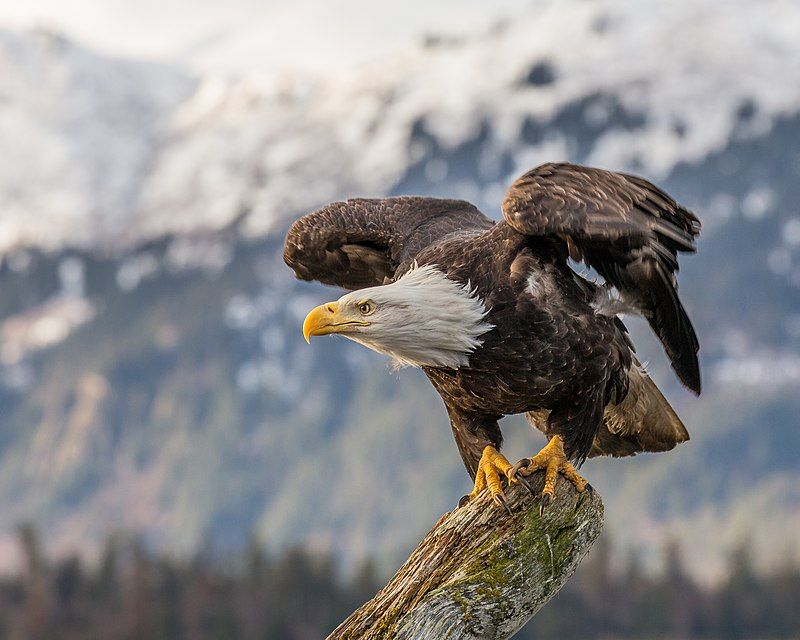
The Bald Eagle, Haliaeetus leucocephalus, is a majestic bird of prey and a symbol of the United States. Despite its name, the Bald Eagle is not actually bald; the name derives from an older meaning of “white-headed.”
These large raptors have a dark brown body and wings, with a striking white head and tail. They are found near large bodies of open water with abundant fish, their primary food source.
Bald Eagles are also known to eat waterfowl and small mammals. These birds are known for their impressive nest structures, among the largest bird species.
Thanks to conservation efforts, bald Eagles have made a remarkable recovery from the brink of extinction and are now a common sight in North America.
| Kingdom | Animalia |
| Phylum | Chordata |
| Class | Aves |
| Order | Accipitriformes |
| Family | Accipitridae |
| Genus | Haliaeetus |
| Species | H. leucocephalus |
11. Rough-legged Buzzard (Buteo lagopus)
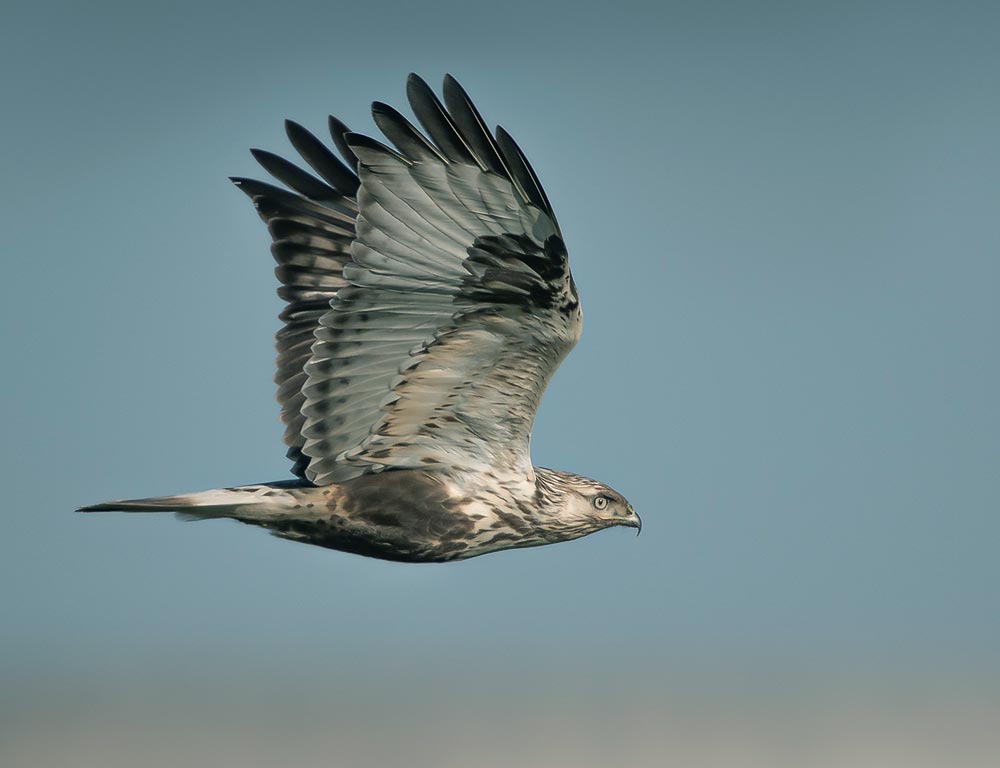
| Kingdom | Animalia |
| Phylum | Chordata |
| Class | Aves |
| Order | Accipitriformes |
| Family | Accipitridae |
| Genus | Buteo |
| Species | B. lagopus |
12. Owl (General Overview)

In order Strigiformes, owls are birds of prey known for their distinctive features, such as a flat face, large eyes, and nocturnal habits. There are over 200 species varying in size and habitat.
Owls are found worldwide and are adept hunters, feeding mainly on small mammals, insects, and other birds. They have excellent night vision, acute hearing, and silent flight, making them effective nocturnal predators.
Owls play a crucial role in maintaining the balance of ecosystems by controlling rodent populations. They are also culturally significant, often symbolizing wisdom or mystery in various folklore and mythologies.
| Kingdom | Animalia |
| Phylum | Chordata |
| Class | Aves |
| Clade | Telluraves |
| Order | Strigiformes |
13. Northern Goshawk (Accipiter gentilis)
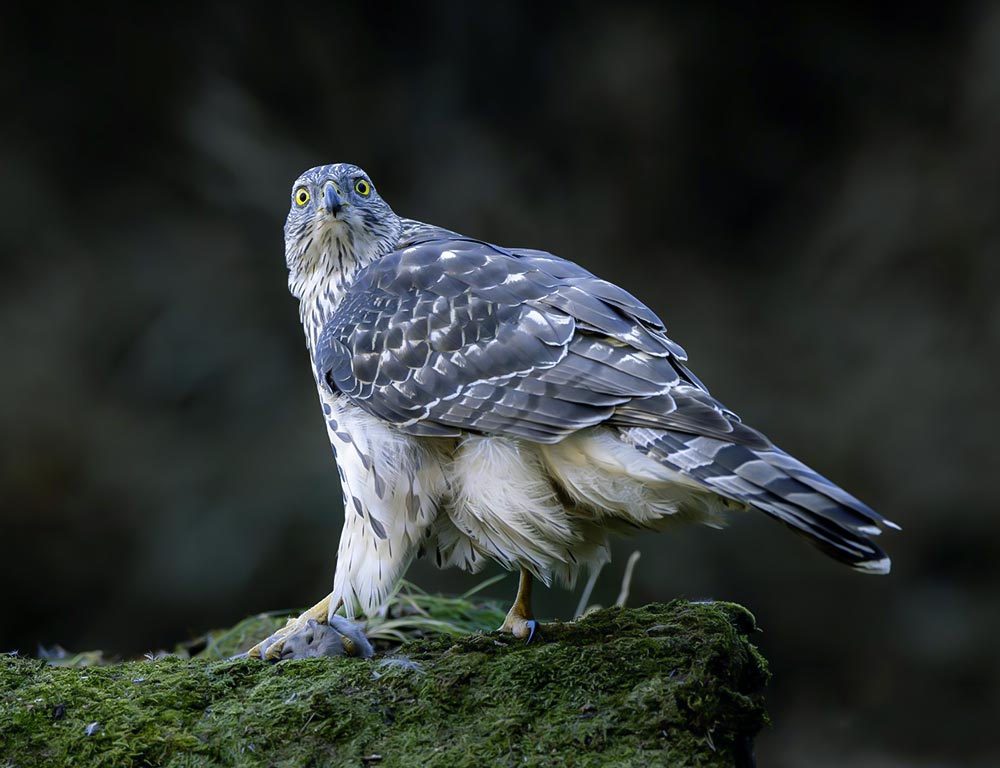
The Northern Goshawk, Accipiter gentilis, is a large, powerful hawk found in forests across the Northern Hemisphere. It is the larger relative of the Sharp-shinned Hawk and Cooper’s Hawk, with broad, rounded wings and a long tail for agile flight in wooded areas.
Northern Goshawks have a fierce demeanor and are known for their incredible hunting skills, preying on birds and mammals. They are characterized by their blue-gray back, striking red eyes, and a prominent white eyebrow stripe.
These solitary birds are secretive and hard to spot, often heard through their loud, piercing calls. They are territorial, especially during breeding, and build large nests in tall trees.
| Kingdom | Animalia |
| Phylum | Chordata |
| Class | Aves |
| Order | Accipitriformes |
| Family | Accipitridae |
| Genus | Accipiter |
| Species | A. gentilis |
14. Barred Owl (Strix varia)
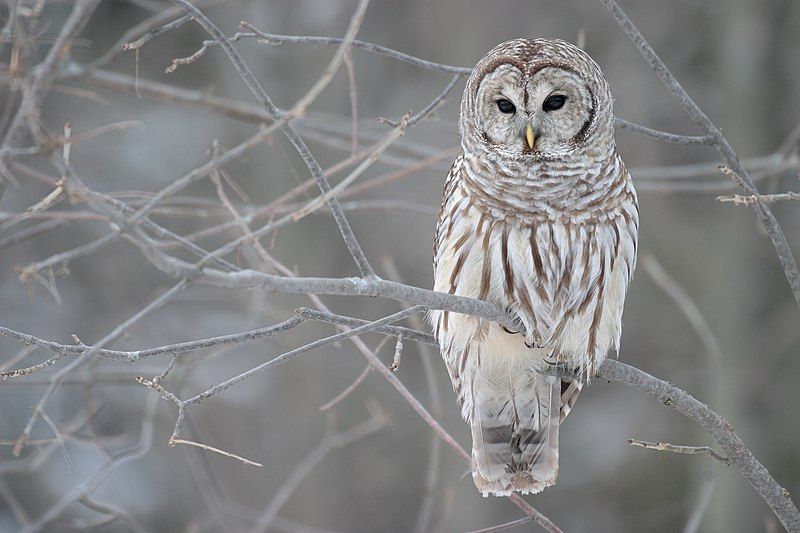
The Barred Owl, Strix varia, is a large North American owl known for its distinctive “Who cooks for you?” call. It has a round head with no ear tufts and striking brown eyes, a rarity among owls.
The plumage is mottled brown and white with horizontal barring on the chest and vertical streaks on the belly.
Barred Owls prefer mature forests with a mix of deciduous and coniferous trees, often near water. They hunt at night, preying on small mammals, birds, and amphibians.
Barred Owls are known for being particularly vocal and can often be heard calling to each other throughout the night.
| Kingdom | Animalia |
| Phylum | Chordata |
| Class | Aves |
| Order | Strigiformes |
| Family | Strigidae |
| Genus | Strix |
| Species | S. varia |
15. Northern Harrier (Circus hudsonius)
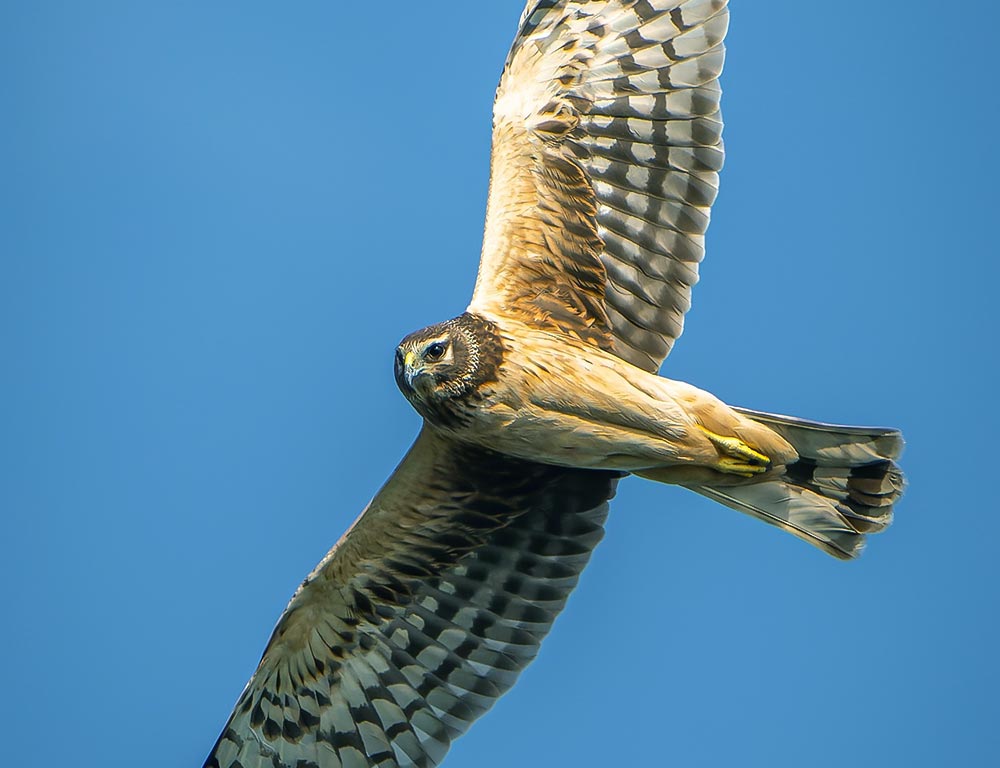
The Northern Harrier, formerly known as Circus cyaneus and now Circus hudsonius, is a distinctive bird of prey found in open habitats like marshes and grasslands across North America.
It has a long tail and broad wings and is known for its unique hunting method – flying low over the ground to surprise prey.
The male is gray while the female is brown, both sporting a white rump patch that is visible in flight. Northern Harriers have an owl-like facial disk that helps them hear rodents while flying.
They are solitary and build their nests on the ground. These birds are important in controlling rodent and insect populations in their habitats.
| Kingdom | Animalia |
| Phylum | Chordata |
| Class | Aves |
| Order | Accipitriformes |
| Family | Accipitridae |
| Genus | Circus |
| Species | C. hudsonius |
16. Golden Eagle (Aquila chrysaetos)
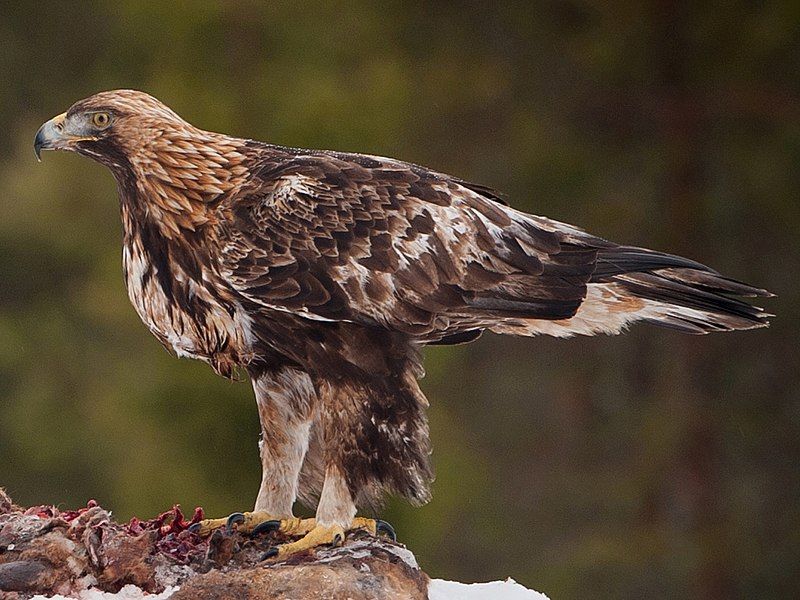
The Golden Eagle, Aquila Chrysaetos, is one of the best-known birds of prey in the Northern Hemisphere. It is a large, powerful raptor with broad wings, known for its speed and agility.
The adult has dark brown plumage with a golden sheen on the back of its head and neck. Golden Eagles prey on various animals, including rabbits, squirrels, and sometimes larger prey like deer. They are often seen soaring high in the sky in mountainous or open landscapes.
Golden Eagles are monogamous and known for their impressive aerial displays during courtship. These majestic birds are revered in many cultures and symbolize strength and freedom.
| Kingdom | Animalia |
| Phylum | Chordata |
| Class | Aves |
| Order | Accipitriformes |
| Family | Accipitridae |
| Genus | Aquila |
| Species | A. chrysaetos |
17. Eastern Screech Owl (Megascops asio)
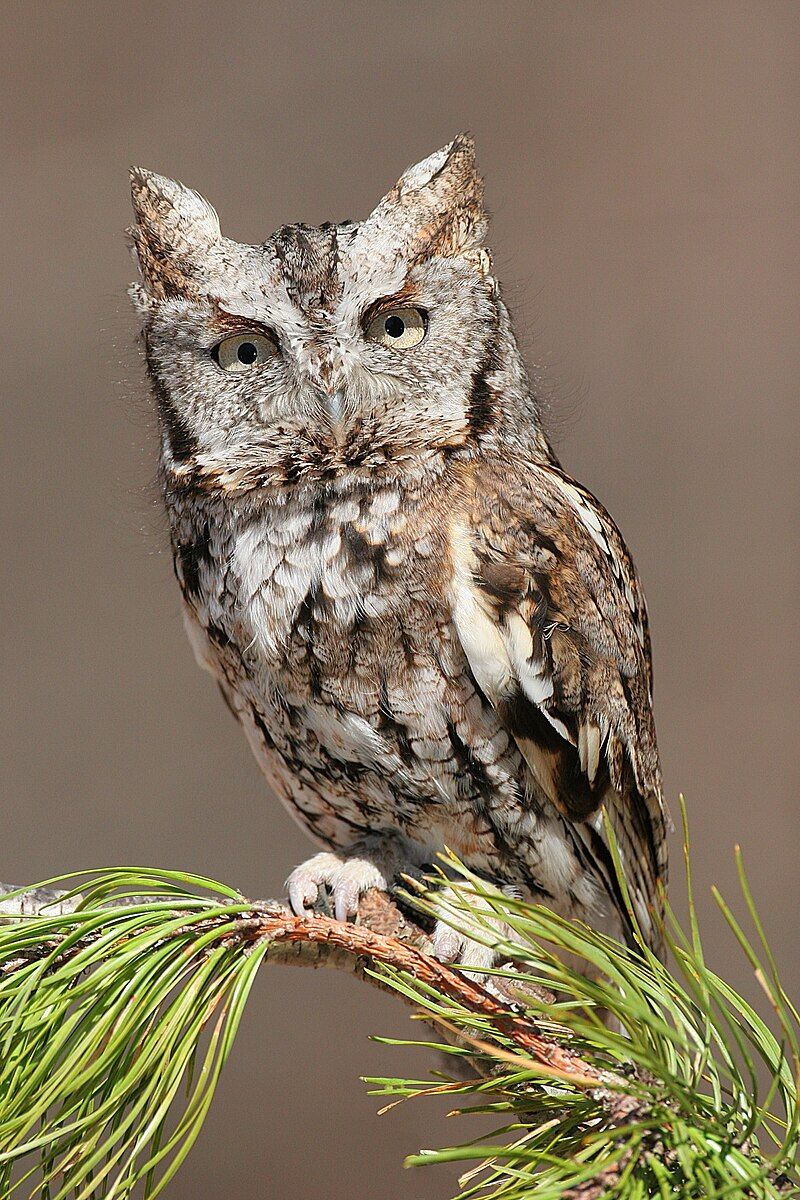
| Kingdom | Animalia |
| Phylum | Chordata |
| Class | Aves |
| Order | Strigiformes |
| Family | Strigidae |
| Genus | Megascops |
| Species | M. asio |
18. Barn Owl (Tyto alba)
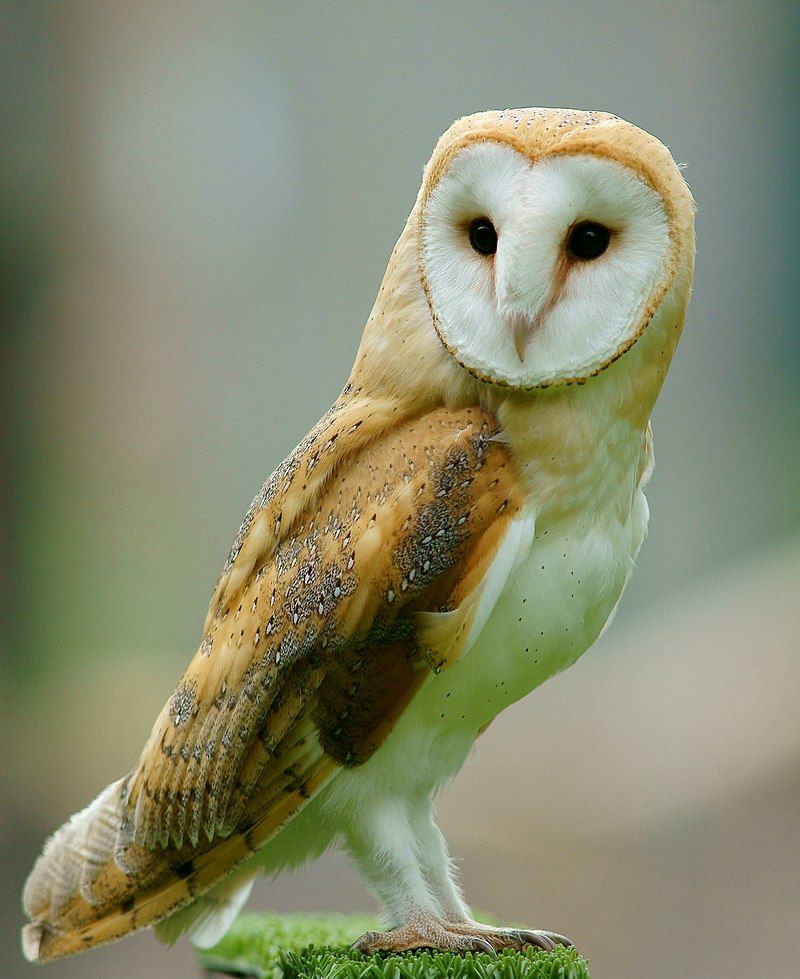
The Barn Owl, Tyto alba, is a distinctive and widely distributed owl known for its heart-shaped face and ghostly appearance. Primarily nocturnal, it has excellent low-light vision and exceptional hearing, which it uses to hunt rodents, its main prey.
The Barn Owl’s silent flight is due to the unique structure of its feathers, allowing it to approach its prey stealthily. It has a pale, golden-brown plumage with white underparts.
Barn Owls prefer open habitats like farmland and grasslands and often nest in barns and other buildings, hence their name. Their eerie screeches and hisses contribute to various folklore and myths worldwide.
| Kingdom | Animalia |
| Phylum | Chordata |
| Class | Aves |
| Order | Strigiformes |
| Family | Tytonidae |
| Genus | Tyto |
| Species | T. alba |
19. Merlin (Falco columbarius)
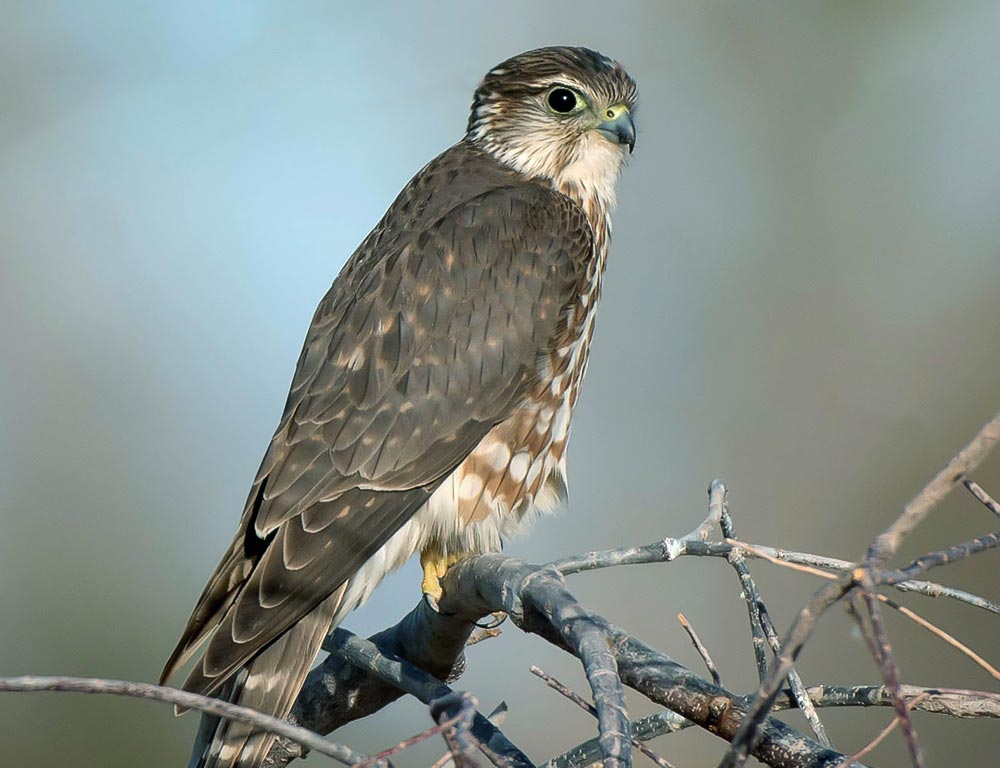
The Merlin Falco Columbarius is a small but fierce falcon known for its speed and agility. It has a broad distribution and is found in parts of the Northern Hemisphere.
Merlins have a blue-gray back, banded tail, and a distinctive facial pattern. They are dynamic hunters, preying on small birds, which they catch in mid-air in thrilling chases. Merlins are often seen in open habitats like fields and marshlands.
They have adapted well to urban environments, where they can be seen zipping through the sky in pursuit of prey. Despite their small size, Merlins are bold, often taking on larger birds.
| Kingdom | Animalia |
| Phylum | Chordata |
| Class | Aves |
| Order | Falconiformes |
| Family | Falconidae |
| Genus | Falco |
| Species | F. columbarius |
20. Turkey Vulture (Cathartes aura)
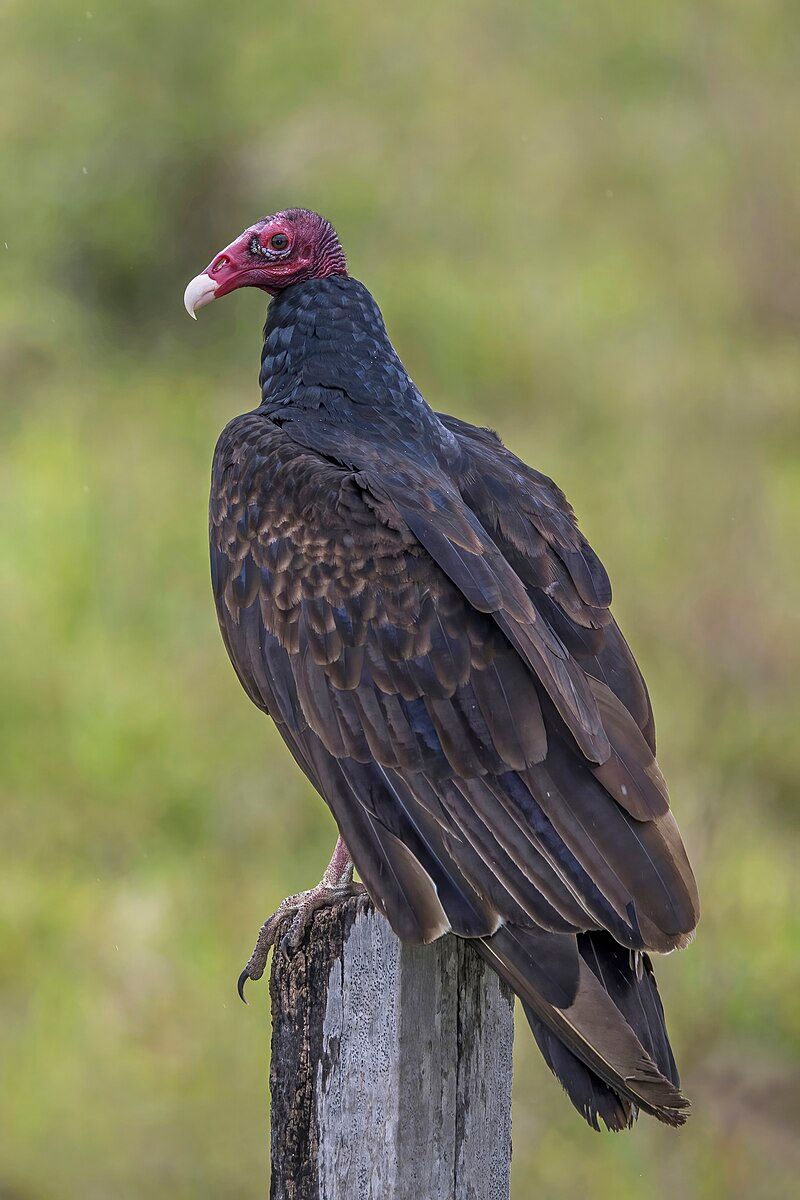
The Turkey Vulture, Cathartes aura, is a large bird of prey known for its vital role as a scavenger in the ecosystem. It has a wide range across the Americas and is easily recognized by its red, unfeathered head and large, dark body.
It holds its wings in a distinctive V-shape and rocks side-to-side in flight. Turkey Vultures have an acute sense of smell, which they use to locate carrion, their main food source.
This feeding habit makes them important in cleaning the environment and controlling the spread of diseases. Despite their somewhat unappealing diet, they are graceful in flight and essential to ecological balance.
| Kingdom | Animalia |
| Phylum | Chordata |
| Class | Aves |
| Order | Accipitriformes |
| Family | Cathartidae |
| Genus | Cathartes |
| Species | C. aura |
21. Swallow-tailed Kite (Elanoides forficatus)
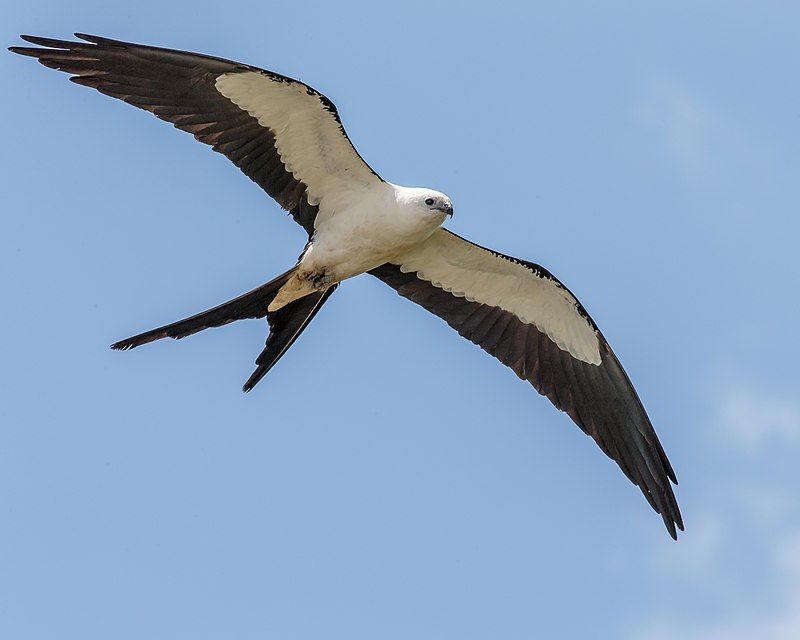
The Swallow-tailed Kite, Elanoides forficatus, is an elegant bird of prey known for its striking appearance and aerial acrobatics. It has a deeply forked tail, which it uses skillfully in flight.
The kite’s plumage is predominantly black and white, with a white head, underparts, and black wings and tail. They are found in the southeastern United States and parts of South America, inhabiting swampy forests and riversides.
Swallow-tailed Kites feed on insects and small vertebrates, often catching them in mid-air. They are migratory birds, traveling long distances between their breeding and wintering grounds.
Their graceful flight and distinctive tail make them a favorite among birdwatchers.
| Kingdom | Animalia |
| Phylum | Chordata |
| Class | Aves |
| Order | Accipitriformes |
| Family | Accipitridae |
| Genus | Elanoides |
| Species | E. forficatus |
22. Northern Saw-whet Owl (Aegolius acadicus)
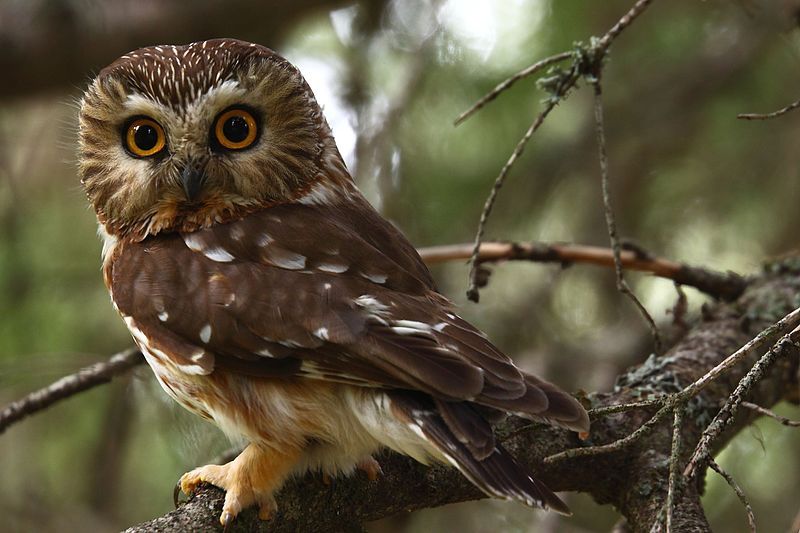
The Northern Saw-whet Owl, Aegolius acadicus, is a small, charismatic owl found in forests across North America. It has a round, large-headed appearance with big yellow eyes and a brown, white-streaked plumage.
Named for its saw-like call, this owl is nocturnal and elusive, making it a rare sight. It preys primarily on small mammals and insects. The Northern Saw-whet Owl nests in tree cavities and is known for its secretive nature.
Despite their small size and cute appearance, they are skilled predators, playing an important role in controlling rodent populations in their woodland habitats.
| Kingdom | Animalia |
| Phylum | Chordata |
| Class | Aves |
| Order | Strigiformes |
| Family | Strigidae |
| Genus | Aegolius |
| Species | A. acadicus |
23. Hawk (General Overview)
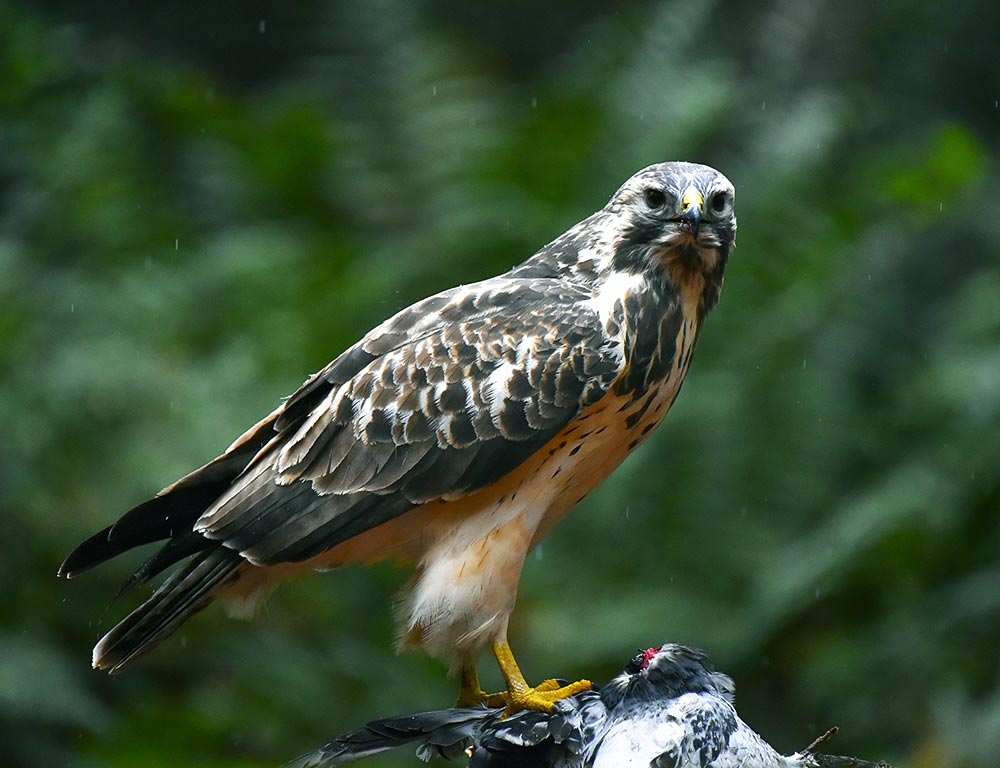
| Kingdom | Animalia |
| Phylum | Chordata |
| Clade | Dinosauria |
| Class | Aves |
| Order | Accipitriformes |
| Family | Accipitridae |
24. Eagle
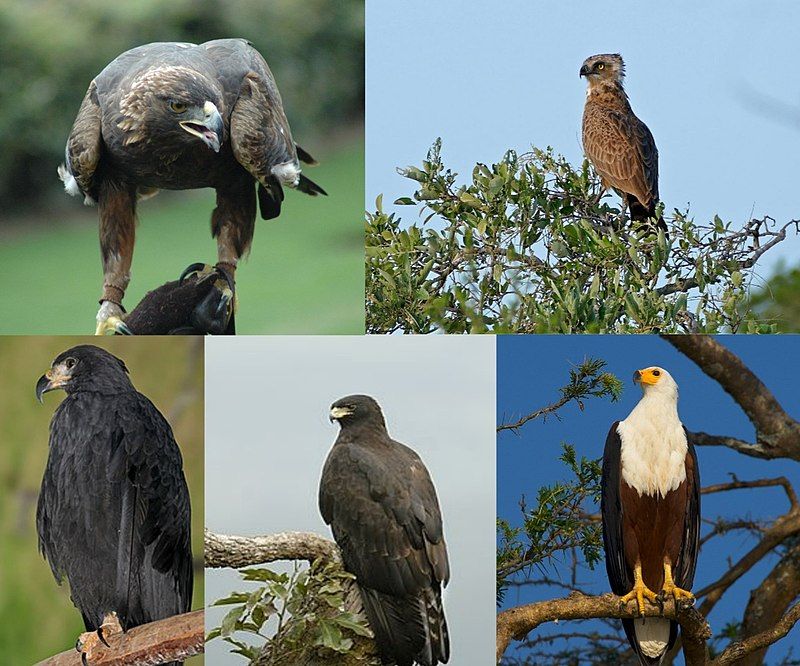
| Kingdom | Animalia |
| Phylum | Chordata |
| Class | Aves |
| Order | Accipitriformes |
| Family | Accipitridae |
Conclusion
North Carolina’s diverse landscapes offer a remarkable haven for a wide array of birds of prey. Each of the 24 species discussed exemplifies the adaptability and prowess of these magnificent raptors.
From the high-flying Peregrine Falcons to the silently gliding Barn Owls, they not only add to the state’s natural splendor but also play an indispensable role in its ecosystems.
Understanding and appreciating these birds of prey enhances our awareness of nature’s delicate balance and conservation efforts’ importance.
Their presence and survival are indicators of the health of our environment, making them invaluable treasures of North Carolina’s rich biodiversity.